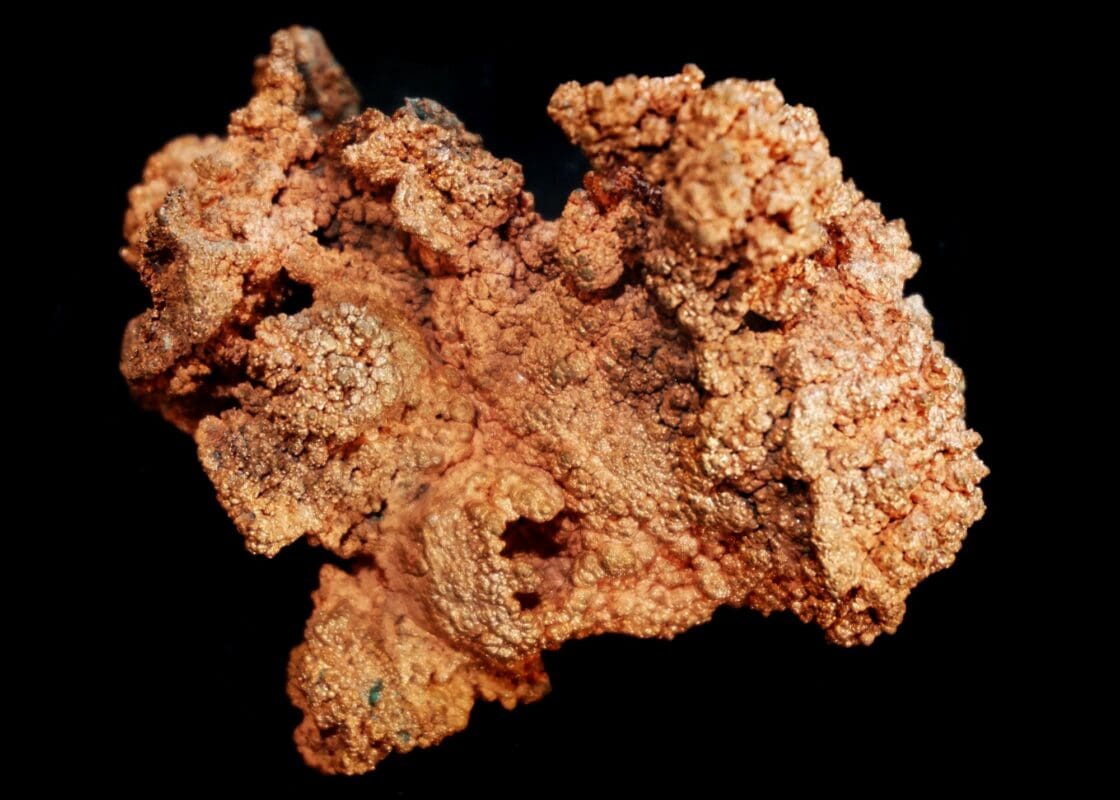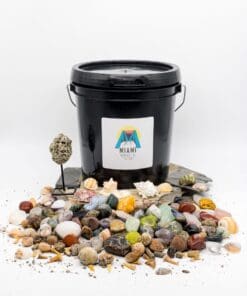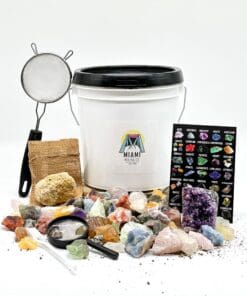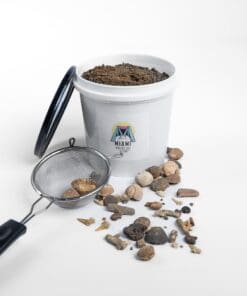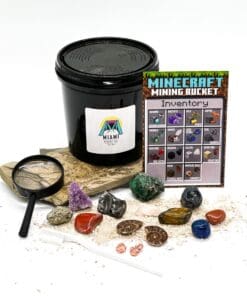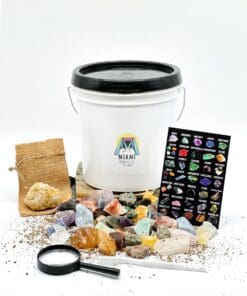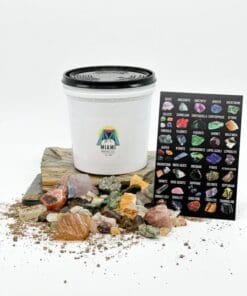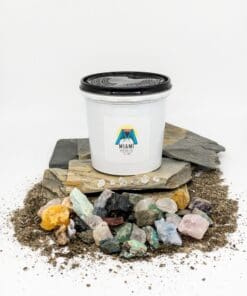Gem Mining Michigan Hotspots and Tips: Discover Hidden Treasures
Michigan, often referred to as the “Great Lakes State,” is not just known for its freshwaters but also for its shimmering gemstones. From colorful agates to captivating copper, the state is a hidden treasure trove for those who have an affinity for gem hunting. This article offers an in-depth guide to the gemstones of Michigan, where to find them, and how to turn your discoveries into cherished keepsakes.
The Most Popular Gemstones in Michigan
Michigan is indeed a haven for gem enthusiasts, with a mix of both common and rare gemstones waiting to be discovered. Below, we break down these treasures into two categories: rare finds and those you might stumble upon more frequently.
Rare Gemstones in Michigan
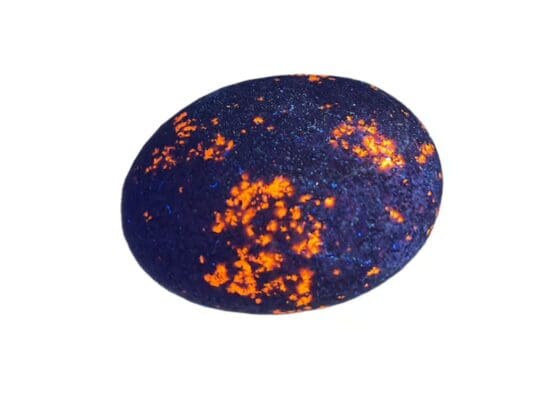
| Gemstone | Description |
|---|---|
| Lake Superior Agate | Known for its vivid bands of color, often red, orange, and yellow due to iron inclusions. |
| Michigan Greenstone | Also known as Chlorastrolite, it showcases a turtleback pattern and is the official state gem. |
| Isle Royale Datolite | A pale stone often found in shades of peach or cream, occasionally showing green and copper inclusions. |
| Thomsonite | Typically displays a radial pattern in shades of pink, green, and cream. |
| Binghamite | A variant of the Lake Superior Agate, this stone is known for its starburst patterns. |
Common Gemstones in Michigan
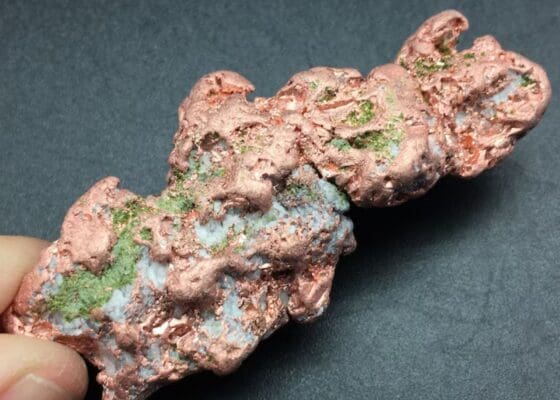
| Gemstone | Description |
|---|---|
| Native Copper | Not a gemstone per se, but its beauty when polished makes it a common choice for jewelry. |
| Epidote | A green crystal often found alongside copper. |
| Quartz | Clear to milky in color, quartz is versatile and abundant. |
| Calcite | Found in many parts of Michigan, often in limestone quarries, it can glow under UV light. |
| Jasper | A form of chalcedony, it comes in red, brown, or green and is often polished for jewelry. |
| Feldspar | A group of rock-forming minerals, typically forming in pink crystals. |
| Prehnite | A pale green mineral often found with epidote in the Upper Peninsula. |
| Pumpellyite | Blue-green to dark green, often found near Lake Superior. |
| Hematite | Known for its dark, metallic luster and is a major ore of iron. |
| Specularite | A variety of hematite that has a sparkly, silver appearance and is often found in the iron mines of the region. |
Whether you’re in search of the elusive Michigan Greenstone or the more commonly found quartz, Michigan’s rich geological history promises both casual collectors and serious gem hunters an adventurous pursuit.
Top Gem Mining Locations in Michigan

- Keweenaw Peninsula: Located at the northernmost part of Michigan, Keweenaw is a hotspot for native copper, agate, and datolite. While some mines here have become tourist attractions, others still allow hands-on gem hunting. The Quincy Mine offers tours from May to October with a small entrance fee.
- Isle Royale: Situated in Lake Superior, this island is the go-to place for Michigan Greenstone. Due to its national park status, collection is restricted; however, guided tours provide rich information on the area’s geology. Park hours vary, and there’s an entrance fee.
- Lake Superior Beaches: Stretching across the Upper Peninsula, these beaches are a haven for agate hunters, especially after storms. The beaches are mostly public, open from dawn till dusk, with no fees for collecting.
- Copper Falls Mine: Near Ontonagon, this old mine offers datolite nodules alongside copper. It’s best to visit during summer, and while there’s no fee for entrance, guided tours may have charges.
- A.E. Seaman Mineral Museum: Located in Houghton, while not a mining site, it offers an extensive collection of Michigan’s gems and minerals, providing clues to eager hunters. The museum operates from 9 AM to 5 PM with a nominal entrance fee.
- Gratiot Lake: Found in the Keweenaw Peninsula, Gratiot Lake is known for its quartz and jasper deposits. It’s open year-round with no specific collecting fees.
- Central Mine: Another gem of the Keweenaw Peninsula, Central Mine is an excellent spot for epidote. The site is open to the public during daylight hours with no associated fees.
- Marquette County: Renowned for its specularite deposits, this county in the Upper Peninsula is a must-visit for those hunting this shiny version of hematite. Sites are open year-round with no specific collecting costs.
- Iron Mountain: Located in Dickinson County, Iron Mountain is the place for those after hematite and quartz. There are numerous open pits, but always seek permission before entering. The area is accessible throughout the year with varying fees based on specific sites.
- Gogebic Range: Straddling the Michigan-Wisconsin border, the Gogebic Range is rich in hematite and magnetite. Always ensure you have the right permissions to collect, and while some sites are free, others might charge a nominal fee.
Michigan’s vast landscapes and rich geological history provide an abundance of sites for gem enthusiasts. Whether you’re an expert or just beginning your gem hunting journey, there’s a spot in Michigan waiting for you to uncover its hidden treasures.
History of Gem Mining in Michigan
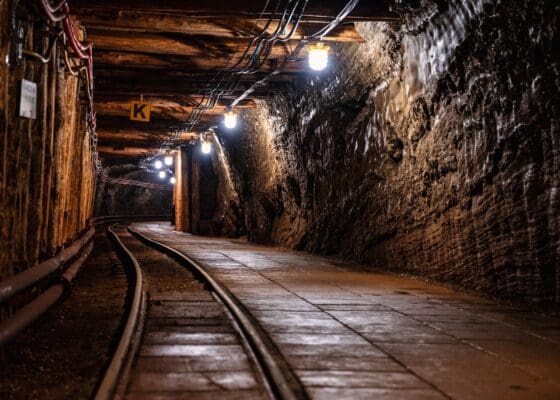
Gem mining and mineral extraction have been integral aspects of Michigan’s history, painting a rich tapestry of cultural, economic, and geological tales that span thousands of years. While the allure of precious and semi-precious gemstones beckons enthusiasts today, the roots of Michigan’s mineral saga run deep, both figuratively and literally.
The story begins over 7,000 years ago with the indigenous tribes of the region. Long before European settlers recognized Michigan’s potential as a mineral haven, Native Americans were already extracting and using copper from the surface deposits scattered across the Upper Peninsula, particularly the Keweenaw Peninsula. These early miners fashioned tools, weapons, jewelry, and other artifacts from this malleable metal, trading them across vast indigenous trade networks. Artifacts of Michigan copper have been found as far away as the Gulf of Mexico and the Atlantic coast, indicating the metal’s value in ancient commerce.
The 19th century marked a transformative era for Michigan’s mining landscape. With the arrival of European settlers and advancements in mining technology, what was once artisanal extraction by Native Americans exploded into large-scale, industrialized operations. The 1840s, in particular, heralded a copper boom, with Michigan supplying a significant portion of the nation’s copper until the early 20th century. Towns like Calumet and Houghton sprouted almost overnight, driven by the surge in demand and the influx of miners seeking their fortunes.
Parallel to copper’s reign, Michigan also became known for its unique and coveted gemstones, such as the Lake Superior Agate and the Michigan Greenstone. These gems, polished by nature and time, have fascinated collectors for centuries, adding another layer to Michigan’s rich mining history.
It’s essential to recognize the interplay between the natural bounty and the determined spirit of generations of miners and gem hunters. Their endeavors not only shaped Michigan’s economic trajectory but also left a legacy of tales of ambition, perseverance, and discovery that continues to inspire and attract mineral enthusiasts to the state today.
Gem Mining Regulations in Michigan

Gem hunting, while an exciting pursuit, is also subject to various rules and regulations in Michigan. These regulations aim to preserve the state’s rich geological heritage, protect natural habitats, and ensure that hobbyists can continue to enjoy the thrill of discovery for generations to come.
Michigan is a vast state with a diverse range of landscapes, from the beaches of the Great Lakes to the dense forests of the Upper Peninsula. Each of these areas has specific regulations when it comes to mineral collection. Familiarizing oneself with these rules is not just a matter of legal compliance but also an act of stewardship toward Michigan’s natural treasures.
- Public vs. Private Land: Firstly, it’s imperative to understand the difference between public and private lands. While certain public lands may allow for casual collecting, private properties require explicit permission from the landowner. Trespassing or removing minerals without consent can result in hefty fines and legal consequences.
- State Parks and Preserves: Many of Michigan’s state parks and nature preserves have strict regulations prohibiting the collection of any natural materials, including gemstones. Even in parks where collecting is allowed, there may be limits on the volume or type of materials you can remove.
- Permit Requirements: In some areas, especially designated mining regions, a permit may be required to collect gemstones. These permits might come with specific guidelines regarding the extraction method, collection volume, and designated collecting zones.
- Protection of Natural Habitats: Areas that are ecologically sensitive, such as habitats of endangered species, wetlands, or unique geological formations, often come with stringent restrictions. The objective is to minimize disruption to these fragile ecosystems.
- Cultural and Historical Sites: Michigan has numerous indigenous and historical sites that are protected by law. Removing artifacts or materials from these sites is not only illegal but also a disservice to the state’s rich cultural heritage.
- Safety Regulations: Especially in areas with old mines or quarries, there are regulations in place to ensure the safety of gem hunters. Abandoned mines can be hazardous, and entering them without proper permission or safety equipment is forbidden.
- Educational and Scientific Collecting: For those looking to collect for educational or scientific purposes, special permits and regulations apply. These often require detailed documentation and adherence to specific collection and reporting standards.
In conclusion, while Michigan offers vast opportunities for gem hunting and mineral collection, it’s essential to approach the activity with a sense of responsibility. Respecting the state’s regulations ensures the protection of its natural and cultural treasures, while also guaranteeing that the joy of gem hunting can be passed down to future generations.
Necessary Tools and Equipment for Gem Mining in Michigan
Gem hunting in Michigan, while a thrilling endeavor, requires preparation. The nature of Michigan’s diverse landscapes, which range from lake shores to dense forests and hilly terrains, means that each environment presents its own challenges. Therefore, having the right tools and equipment is vital to ensure a fruitful and safe expedition.
1. Screening and Classifying Tools: Reveal those hidden treasures!
Description: Especially useful when searching riverbeds or lake shores, sieves help separate smaller gemstones from the surrounding sand or soil.

🛒 Explore Top Screening Sets on Amazon
2. Shovels and Trowels: Digging deep or just scratching the surface?
Description: For digging into softer soils or clearing away surface debris, a sturdy hand shovel or trowel is indispensable. It aids in unearthing potential gem-containing substrates.

🛒 Find Quality Shovels and Trowels on Amazon
3. Picks and Hammers: The backbone of any gem hunting endeavor.
Description: These are fundamental for breaking rocks and extracting gem specimens. A rock hammer has a flat end for breaking and a pointed end for chiseling. Bringing both light and heavy-duty hammers can be advantageous depending on the task.

🛒 Check Out Best Picks and Hammers on Amazon
4. Buckets: Your trusted companion for carrying treasures.
Description: A sturdy bucket can be handy for carrying larger finds and seperating different types of stones.

🛒 Shop for Reliable Buckets on Amazon
5. Magnifying Glass: Every detail counts!
Description: These tools aid in closely examining potential gemstones, helping you differentiate between valuable finds and mere rocks.

🛒 Grab Your Magnifying Glass on Amazon
6. Guidebooks and Field Guides: Knowledge at your fingertips.
Description: A detailed map of the area you’re exploring, combined with a local gem and mineral guidebook, can be invaluable. These resources guide you to the best spots while providing insights into what you might find.

🛒 Discover the Best Field Guides on Amazon
7. Containers and Bags: Organize, store, and flaunt your finds.
Description: As you collect specimens, having durable bags or containers prevents damage to your finds and makes it easier to carry them.

🛒 Shop for Storage Solutions on Amazon
8. First Aid Kit: Better safe than sorry!
Description: Accidents can happen, so it’s always wise to have a basic first aid kit on hand. Include band-aids, antiseptics, tweezers, and any personal medication.

🛒 Secure Your First Aid Kit on Amazon
Approaching gem hunting with the right equipment ensures that you’re prepared for various scenarios and terrains. Remember, the key is not just about finding gems, but also enjoying the process and the beautiful landscapes Michigan has to offer. Proper preparation guarantees both a productive and enjoyable adventure.
Tips and Tricks for Successful Gem Mining in Michigan

Venturing into Michigan’s picturesque landscapes in pursuit of hidden gemstones is a blend of science, patience, and a touch of intuition. While the thrill of discovery is the heart of gem hunting, a few tips and tricks can make your experience both enjoyable and fruitful.
- Research First: Before heading out, invest time in researching the particular gemstones native to your chosen location. Understanding what you’re looking for helps refine your search.
- Optimal Times: Just after a rainfall or storm, especially along Lake Superior’s shores, can be the best time to find gemstones. Rain can wash away layers of sand and dirt, revealing hidden treasures. Similarly, early mornings can be productive before areas get crowded.
- Start Small: If you’re a beginner, start with easily accessible locations like beaches where agates are often found. As you gain experience, you can venture into more challenging terrains.
- Look for Color and Patterns: Gemstones like the Lake Superior Agate have distinctive colors and patterns. Train your eyes to identify these indicators. Over time, you’ll develop a knack for spotting potential treasures amidst ordinary rocks.
- Join a Local Club: Many areas in Michigan have local gem and mineral clubs. Joining such a group can provide you with invaluable insights, guidance, and opportunities to participate in organized hunts.
- Always Ask Permission: If you’re venturing onto private property or areas not explicitly marked for gem hunting, always seek permission. Respecting boundaries ensures a positive relationship with landowners and keeps gem hunting accessible for everyone.
- Stay Safe: Always inform someone of your whereabouts if venturing into remote areas. Carry adequate water, food, and a communication device. Remember, safety first!
- Document Your Finds: Take pictures and note down the location of your discoveries. This not only serves as a record but can also be a learning tool for future expeditions.
- Practice Patience: Gem hunting is as much about the journey as the outcome. You might not always find what you’re looking for, but the experience, the connection with nature, and the thrill of the hunt are invaluable.
- Leave No Trace: Always ensure you leave an area as you found it. Avoid causing any environmental disruptions and carry back any waste with you. Responsible gem hunting ensures that Michigan’s beautiful landscapes remain pristine for future generations.
Armed with these tips, you’re set to embark on a gem hunting adventure in Michigan. Remember, every trip is an opportunity to learn, discover, and connect with the majestic beauty of the state.
Handling Your Gemstone Finds
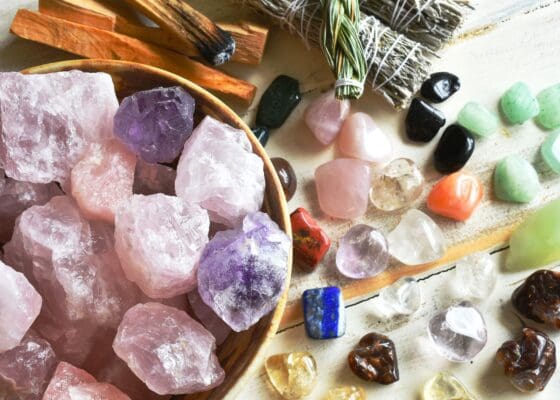
Discovering gemstones during your excursions in Michigan can be an exhilarating experience. However, the journey doesn’t end with the find. Properly handling, cleaning, and preserving your gemstones ensures that their beauty and value are maintained for years to come.
- Gentle Cleaning: Start by rinsing your gemstones with water to remove loose dirt or debris. For tougher residues, use a soft brush, like a toothbrush, and gently scrub under warm water. Avoid harsh chemicals, as they can damage certain stones.
- Identify Before Altering: Before making any alterations, such as cutting or polishing, ensure that you’ve correctly identified the stone. Misidentifying can lead to inappropriate handling and potential damage.
- Storing Gemstones: Keep your gemstones in individual soft pouches or wrapped in cloth to prevent them from scratching each other. For delicate or rare gems, consider using padded gem jars.
- Documenting Your Finds: Create a log for each gemstone, noting down details like where and when it was found, its characteristics, weight, and any unique features. This documentation can be valuable for both personal records and potential valuations.
- Consultation: If you believe you’ve found a particularly valuable or unique gemstone, consult with a gemologist or a local mineral club. They can offer insights into identification, valuation, and best care practices.
- Polishing and Cutting: If you’re interested in enhancing the appearance of your gemstones, consider learning about lapidary arts, which includes cutting, shaping, and polishing stones. Remember that this process is irreversible, so be certain before making alterations.
- Displaying Your Treasures: For those looking to showcase their finds, invest in quality display cases that protect from dust and direct sunlight. UV rays can fade the colors of certain gemstones over time.
- Insurance: For high-value finds, consider having them appraised and insured. While the sentimental value is irreplaceable, insurance provides some security against potential loss or damage.
- Handling Etiquette: When showing your gemstones to others, handle with clean hands and encourage others to do the same. Natural oils from skin can affect certain gemstones over prolonged periods.
- Continued Learning: Gemstone care and handling is a vast field. Continuously educate yourself through books, workshops, and interaction with fellow enthusiasts to ensure you’re giving your finds the best possible care.
In essence, the stones you discover are not just beautiful treasures but also relics of Michigan’s rich geological past. By treating them with respect and care, you’re honoring both their intrinsic value and the adventures that led to their discovery.
Famous Gemstone Finds in Michigan
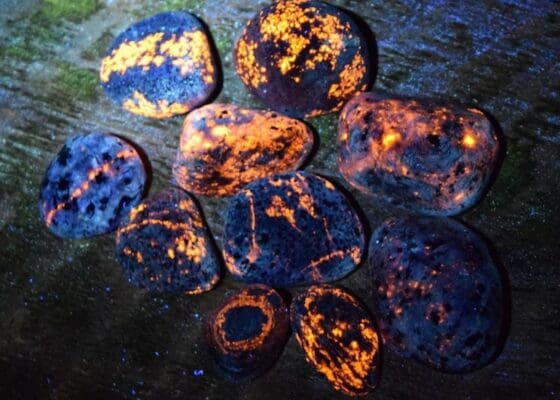
Michigan’s rich geological history, combined with the relentless pursuit of enthusiasts and professionals, has led to several remarkable gemstone discoveries. These finds, often backed by fascinating tales of discovery and awe, have etched their place in the annals of Michigan’s gem history.
- The Laker: Found along the shores of Lake Superior, this is one of the largest Lake Superior agates ever discovered. Weighing over 93 pounds, this massive gemstone boasts vibrant bands and unique patterns that epitomize the beauty of this stone type.
- Isle Royale Greenstone: The Michigan state gem, also known as chlorastrolite, has had numerous notable discoveries. One such piece, found in the 1980s, displayed such intricate turtle-back patterns that it was quickly considered one of the finest specimens ever.
- Copper Gemstones: Michigan’s Keweenaw Peninsula is famous for its native copper deposits. In 2000, a miner unearthed a sizable copper nugget embedded with malachite and quartz, forming a stunning combination that was both rare and exquisite.
- Datolite Beauties: Renowned for their vivid colors and crystal clarity, several impressive Datolite specimens have been unearthed in Michigan. One standout piece, extracted from the Quincy Mine, showcased a mesmerizing blend of hues, making it a collector’s dream.
- Petoskey Stones: Named the state stone of Michigan, Petoskey stones are fossilized corals. A particularly large and well-defined specimen was discovered in 1996 near Charlevoix, immediately becoming a sensation among gem enthusiasts.
- Star Blue Garnet: While garnets are common, star garnets are exceedingly rare. A gem hunter in Michigan’s Upper Peninsula chanced upon a blue garnet displaying a sharp 4-ray star, making it one of the few of its kind in the world.
- Celestial Diamond: In the mid-1900s, amidst the sand dunes near Holland, a young explorer stumbled upon a clear stone that later turned out to be a diamond. This rare discovery underscored Michigan’s unexpected geological surprises.
- Golden Amber Finds: Amber, while not common in Michigan, has had its moments of fame. A beautifully translucent piece, with a trapped ancient insect, was found in the state, echoing scenes straight out of “Jurassic Park.”
These famed discoveries, beyond their monetary value, are testaments to Michigan’s geological tapestry. Each find, from the shores of Lake Superior to the dense forests of the Upper Peninsula, tells a story of time, patience, and a hint of serendipity, encouraging gem enthusiasts to keep exploring and dreaming.
Additional Gem Mining Opportunities
Michigan’s gem hunting allure is undeniable, but the quest for shimmering treasures doesn’t stop at its borders. Neighboring states too have rich geological landscapes that promise rewarding gem mining experiences. Here’s a glimpse into what they offer:
- Wisconsin Gem Mining: Directly west of Michigan, Wisconsin is known for its agates, jasper, and quartz crystals. Particularly, the northern regions offer opportunities to find Lake Superior agates similar to Michigan.
- Indiana Gem Mining: To the south, Indiana’s waterways, especially around Brown County, are known for geodes with beautiful crystalline interiors.
- Ohio Gem Mining: Further to the southeast, Ohio beckons with its trilobite fossils and Flint Ridge flint, a beautiful material historically used by Native Americans for tools and weapons.
- Illinois Gem Mining: Beyond Indiana, Illinois is rich in geodes, especially along the Mississippi River in the western part of the state.
- Minnesota Gem Mining: Northwest of Michigan, Minnesota is another hotspot for Lake Superior agates. The state is so proud of this gem that it’s named its official state gemstone.
Each neighboring state offers a unique palette of gemstones and fossils, adding depth and variety to the Midwest’s geological tapestry. For enthusiasts looking to expand their horizons, these states present thrilling opportunities for exploration and discovery.
Discover more about gem mining locations and tips by reading our comprehensive Gem Mining Near Me guide.
Unearth Treasures from the Comfort of Home
The enchantment of gem hunting in Michigan is a journey through time, connecting us with the state’s rich geological past. Each excursion, from the sandy shores of Lake Superior to the dense woodlands of the Upper Peninsula, offers the promise of discovery. It’s a dance of patience, knowledge, and serendipity, where nature unveils its hidden jewels to those persistent enough to seek them.
Yet, not everyone has the means, time, or physical ability to embark on such adventures. Recognizing this, and to bring the joy of gem discovery to all, consider the magic of a general Gem Mining Kit. This at-home alternative is meticulously curated with a variety of gemstones from around the world. With it, both young and old can experience the thrill of unearthing treasures, right from their living room. Whether a supplement to real-world hunts or a standalone experience, these kits ensure the allure of gem mining is accessible to all.

